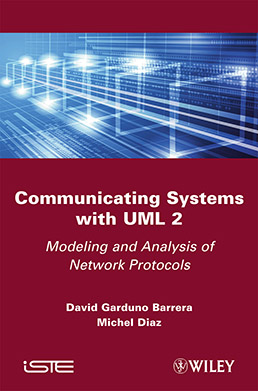
This book gives a practical approach to modeling and analyzing communication protocols using UML 2. Network protocols are always presented with a point of view focusing on partial mechanisms and starting models. This book aims at giving the basis needed for anybody to model and validate their own protocols. It follows a practical approach and gives many examples for the description and analysis of well known basic network mechanisms for protocols.
The book firstly shows how to describe and validate the main protocol issues (such as synchronization problems, client-server interactions, layer organization and behavior, etc.) in an easy and understandable way. To do so, the book considers and presents the main traditional network examples (e.g. unidirectional flows, full-duplex com-munication, error recovering, alternating bit). Finally, it presents the outputs resulting from a few simulations of these UML models.
Other books usually only focus either on teaching UML or on analyzing network protocols, however this book will allow readers to model network protocols using a new perspective and integrating these two views, so facilitating their comprehension and development.
Any university student studying in the field of computing science, or those working in telecommunications, embedded systems or networking will find this book a very useful addition.
1. Why Use UML to Model Network Protocols?.
2. Simple Transmission.
3. Simple Chat Application.
4. Non-reliable Transmission Mediums.
5. Simple Transport Protocol.
Appendix. Detailed Diagrams of the Simple Transport Protocol.
David Garduno Barrera has worked as consultant for many aeronautical companies such as Airbus and Thalès Avionics. His main duties concerned system modeling and product leading. He has also worked as trainer on system modeling (SysML), Business Process Modeling (BPM), OO Analysis and Design for the European Commission and Astrium, amongst others.
Michel Diaz is Director of Research at CNRS, editor of 12 books and 200 publications, Silver Core of IFIP, Senior Member of IEEE, Member of the New York Academy of Sciences, and is listed in the Who's Who in Science and Engineering.